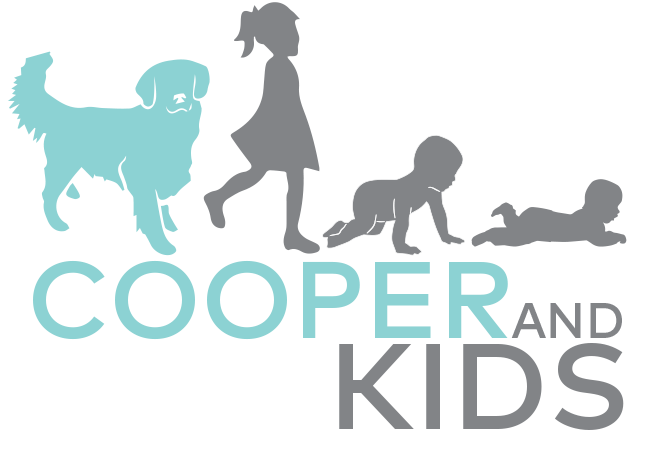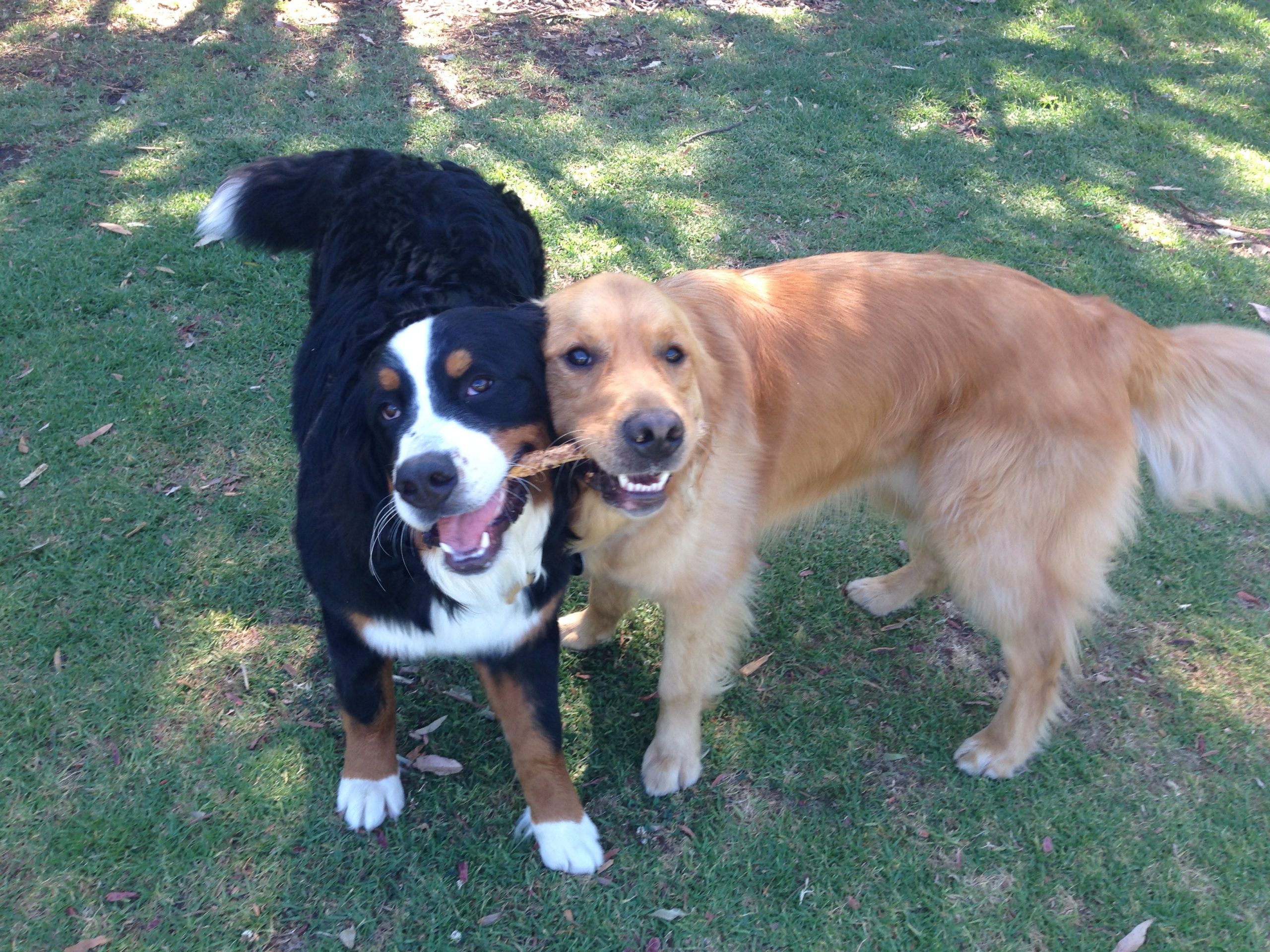Helping You To Understand How Dogs Learn
Believe it or not, dogs perceive the world very differently to how we perceive the world. We can’t forget that dogs are a different species to us, living in our human worlds. Once we understand how dog’s learn, it makes it so much easier to be able to help guide them and teach them about how to live appropriately in our world. When you think about it, every moment is a learning opportunity for your dog, so let’s try to embrace that and help them to get it right more often.
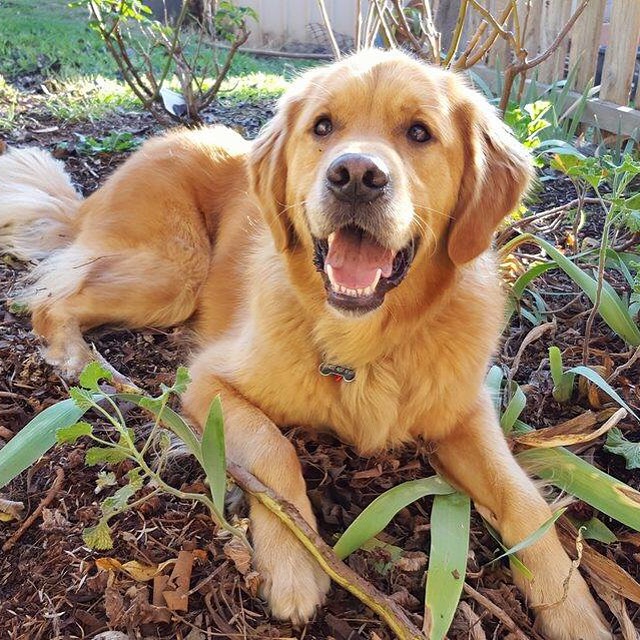
A dog’s view of the world.
Dogs learn in two ways—by association/emotion and by consequence/doing. And because of these two ways of learning, dogs see the world in two ways: What is safe/good for me vs. what is dangerous/bad and what works vs. what doesn’t.
Safe vs. dangerous. This outlook on life comes from learning by association. When a dog is punished for peeing on the carpet in front of you, they don’t learn inside/outside—they learn that it is not safe to pee in front of you, but it is safe to pee when you are not there.
Works vs. doesn’t work. This outlook on life comes from learning by consequence. All dogs try staring at the fridge as a strategy to get it to open. After a time they give up because it doesn’t work; the fridge never opens. They also try staring at their people at the dinner table. Every once in a while someone gives in and shares a bite. Staring at people while they eat often works, so dogs continue to do it.
Let’s look into this a little deeper…
-
Dogs learn by association (by emotional response).
Human example: We humans learn by association, too. When you meet someone for the first time you come away with an association—positive, negative, or neutral. If you really enjoyed the interaction, you are likely to be happy to see that person again. If you didn’t enjoy the interaction, you might get that little pit of dread in your belly when you see them again— you have formed a negative association with that person.
Human and dog comparison: Dogs experience the world this way, too, perhaps more strongly than us because dogs lack the filter of rational thought. They are constantly forming emotional associations—safe, dangerous, neutral or good for me, bad for me, neutral. These associations inform the decisions dogs make and the reactions they have to various situations and things in their environment.
Dog example: A common example of associative learning in dogs is their reaction to the sight of a food bowl. Pull out the right bowl and the average dog will jump into fits of joy. This is because dogs have come to learn that this particular bowl always predicts mealtime. Food is tasty so we love food bowls. In other words, dogs associate bowls with eating.
The amazing thing is that we can use this amazing tool with our dogs to help create new associations to things. For example, a new puppy will generally find a leash insignificant;. But find a way to make a dog associate anything with something he loves and you can teach him to love that, too. How? Clip on the leash and give him treats or take him for a walk. Every time you leash him, either take him for a walk or give him treats until you take the leash back off. Pretty soon the puppy figures out that the leash means fun and, bingo. You have a dog that loves leashes.
The frightening thing is that learning by association also works in reverse. You can teach a dog to hate or fear leashes by repeatedly using them to give corrections or tie him up outside on his own. Or every time he approaches the child, we yell and scream, eventually he is going to learn to associate the baby, with an angry/scary human!
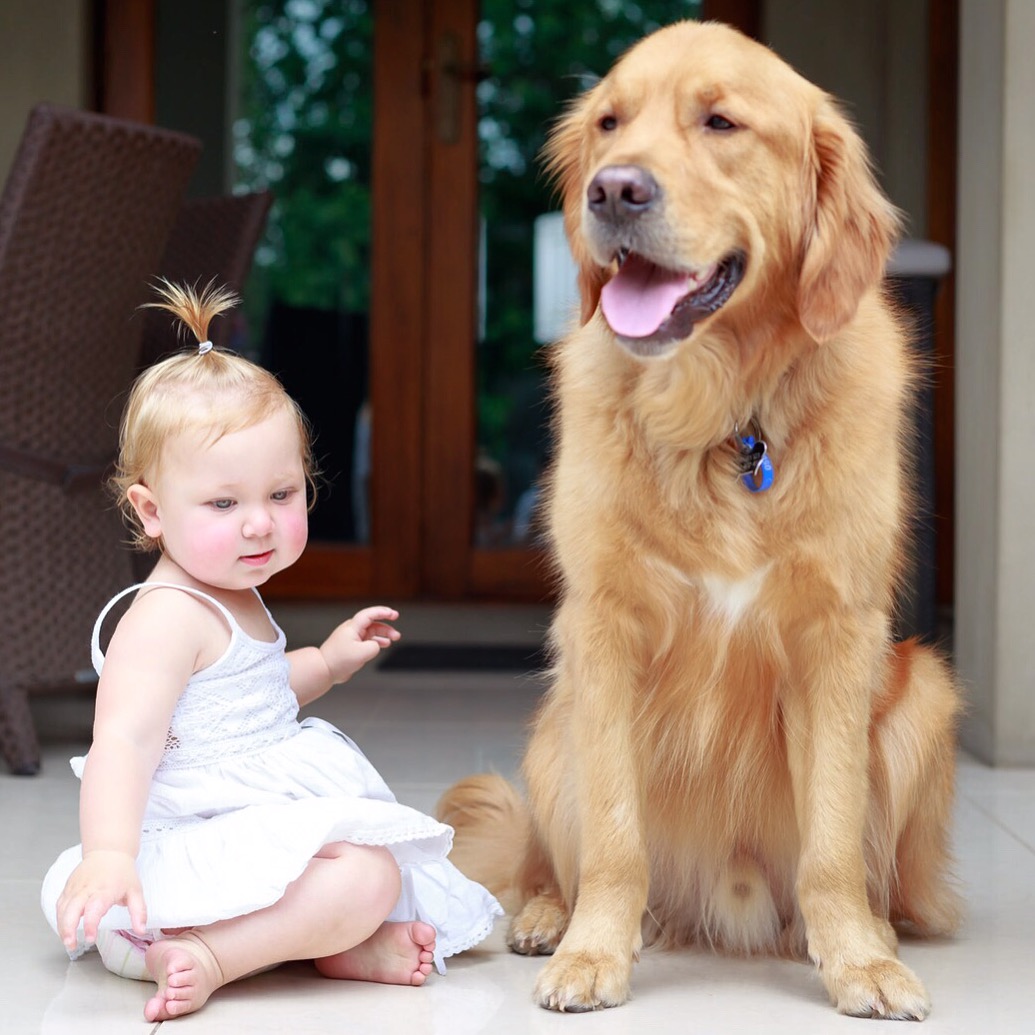
What does this mean to us?
The implications are huge. Everything you do around your dog influences the associations he makes.
Here is an important example: Say I am walking my dog and I don’t like the way he reacts to seeing another dog. Maybe he just barks in excitement, but I don’t like it. I shout, “No!” and pull hard on the leash. This happens every time we see a dog. Pretty soon, my dog’s reaction to other dogs is terrible—he barks and growls and lunges and snaps because I have built a negative association in him: Dogs equal pain. In other words, I have taught my dog to dislike or fear other dogs.
This is the main drawback of using punishment—it has unintended side effects.
For example, it builds a negative association with the punisher, affecting the bond between person and dog. It is not that punishment doesn’t work—it is that learning by association or emotion always comes along for the ride.
What might I do instead if my dog growls and lunges when he sees another dog? Reverse his negative association with other dogs. Treats are a good way to do this, but my dog might be too upset to take the treats. Put a spider right in front of someone who’s petrified of spiders and they will have a hard time listening to instructions to sit down and stop screaming. But keep the spider far enough away, only show it for short periods of time, and distract the phobic person with conversation or chocolate, and things will probably have a better outcome.
The process is the same for dogs who are scared of, or upset by something. It is called desensitisation and involves the 3 Ds: distance, duration, and distraction. We move the dog farther away from the upsetting object, try to keep the situation brief, and distract with cheerful voices and treats.
Remember, we are not rewarding the dog for his ugly display; he is too upset to control his behaviour. Rather we are trying to affect his emotional state so he feels no need to act that way and we can then ask for a different behaviour.
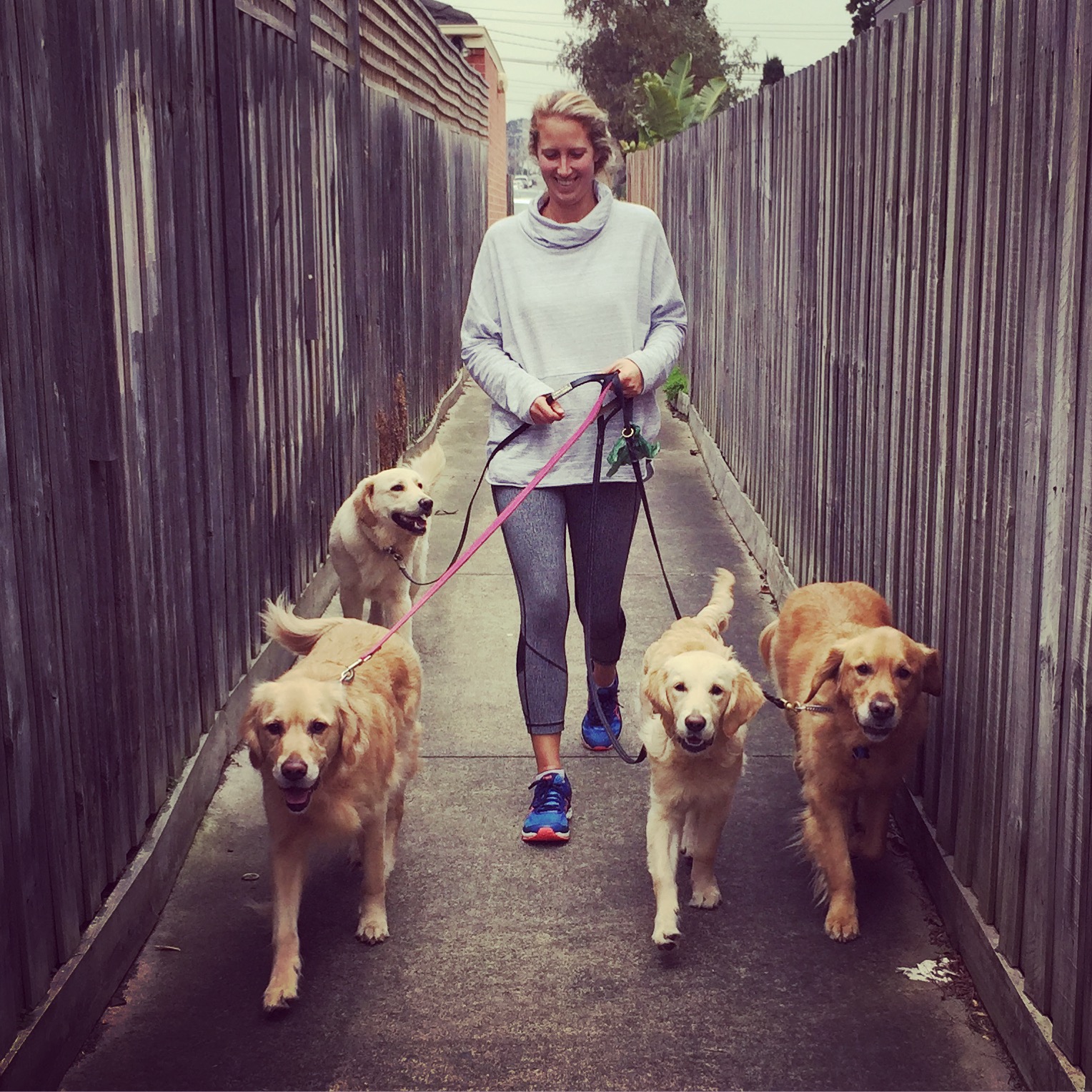
-
Dogs learn by consequence (by doing).
Human example: I can tell a child old enough to understand that I will take him out for ice cream when I see him next week to celebrate his great work at school. When he eats the ice cream, he understands he is being rewarded for the great job at school last week.
Human–dog comparison: A dog could never understand this—it is way beyond his ability to connect events. Dogs learn by consequence like we do, but for dogs the consequence has to be immediate.
Dog example: Say I lure a dog into a sit with my hand. Then I rummage around for the treat. By the time I deliver the treat five seconds later, the impact is lost because in those five seconds, the dog sneezed, sniffed the ground, and looked left. All of a sudden a treat appeared. As far as the dog is concerned, he got it for looking left. You will eventually teach that dog to sit, but it will take a while. Or you might end up with a dog that sits and looks left as a matter of course.
Dogs need precision and immediacy when it comes to learning/training. Give your dog immediate feedback—let him know right away when he has done something you like. You can use praise, treats, or other dog rewards such as throwing a ball, opening a door, or letting your dog off leash.
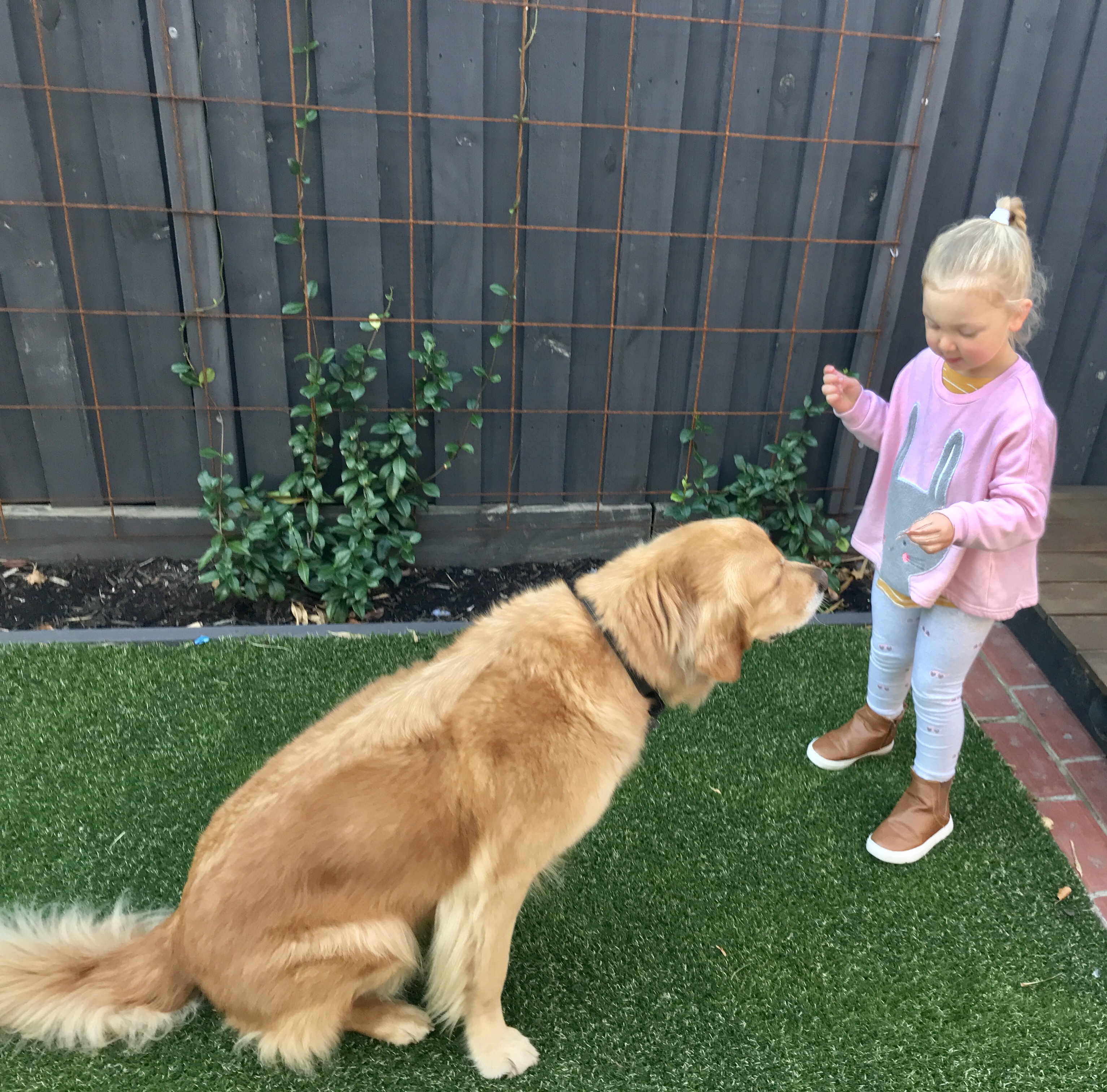
POSITIVE REINFORCEMENT: It is our job to teach our dogs what we want them to do and we should do this through positive reinforcement.
The idea behind positive reinforcement (in a nutshell), is the more you reinforce a behaviour, the more likely it is to occur again. It also helps to strengthen the bond and builds a relationship of trust between you and you dog. As our dogs live alongside us in a human world, we have to actively teach them what behaviours we want to see more of.
The more you reinforce a particular behaviour, the more likely it is to occur again! It is our job to teach our dogs what good behaviours are – so look for all the good behaviours and reinforce (reward) these whenever you can, while ignoring the undesirable behaviours. Use food rewards as often as you can, as this is the most powerful reinforcer.
Don’t be afraid to USE FOOD! Whenever we teach a dog something new, we can use food. Food is a primary/powerful reinforcer which will help to create positive associations. Dogs need food for survival. Pats and praise are secondary/learned reinforcers–like a “thumbs up” to a human, this doesn’t mean anything initially. Over time, we can absolutely build in many other reinforcers too.
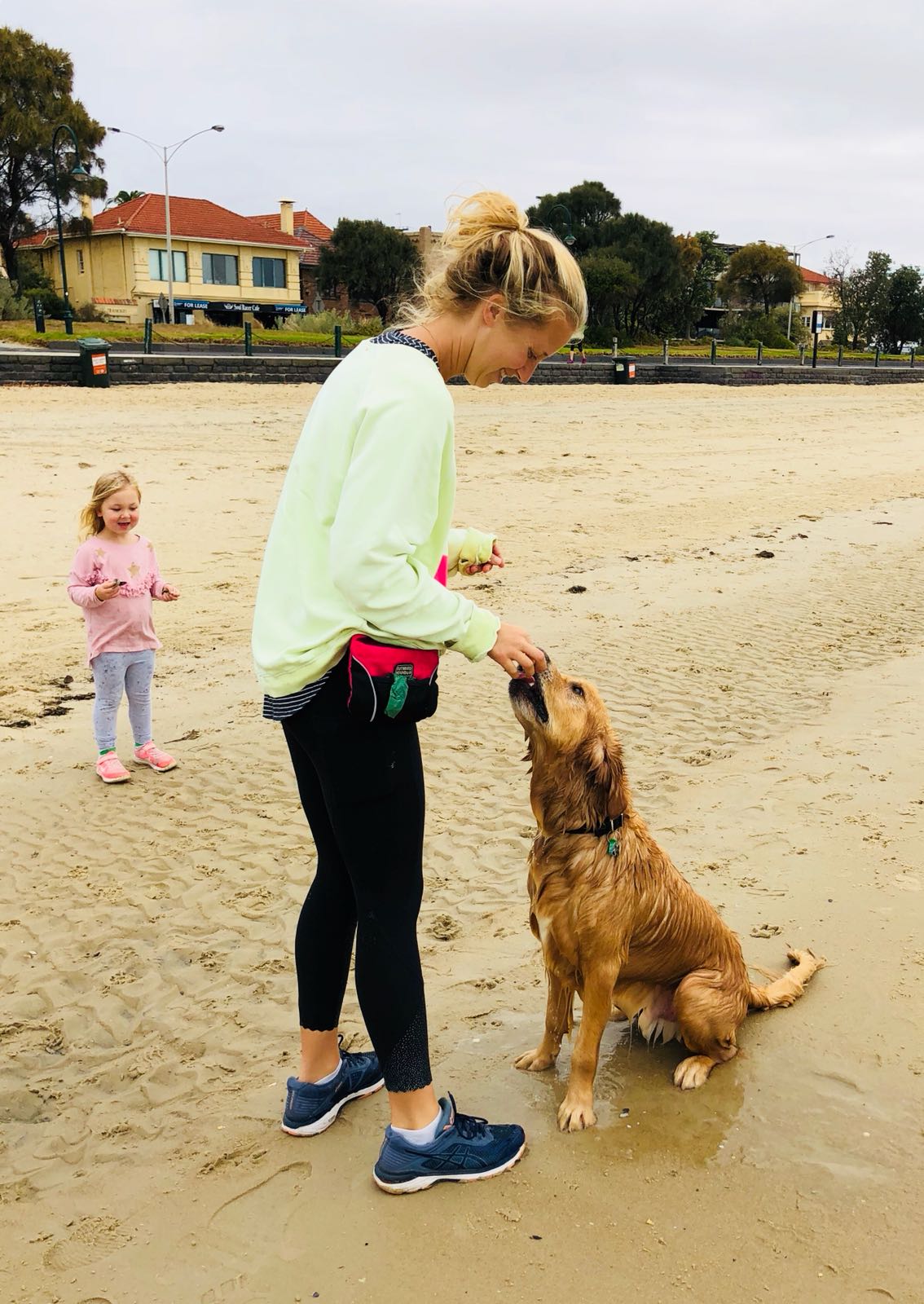
So what can we take away from all of this?
Dogs don’t do things we dislike to get back at us or be stubborn or naughty. This is a myth. To dogs the world is either safe or dangerous and things either work or they don’t. Right or wrong never enters into it, because dogs do not have the capacity for abstract thought.
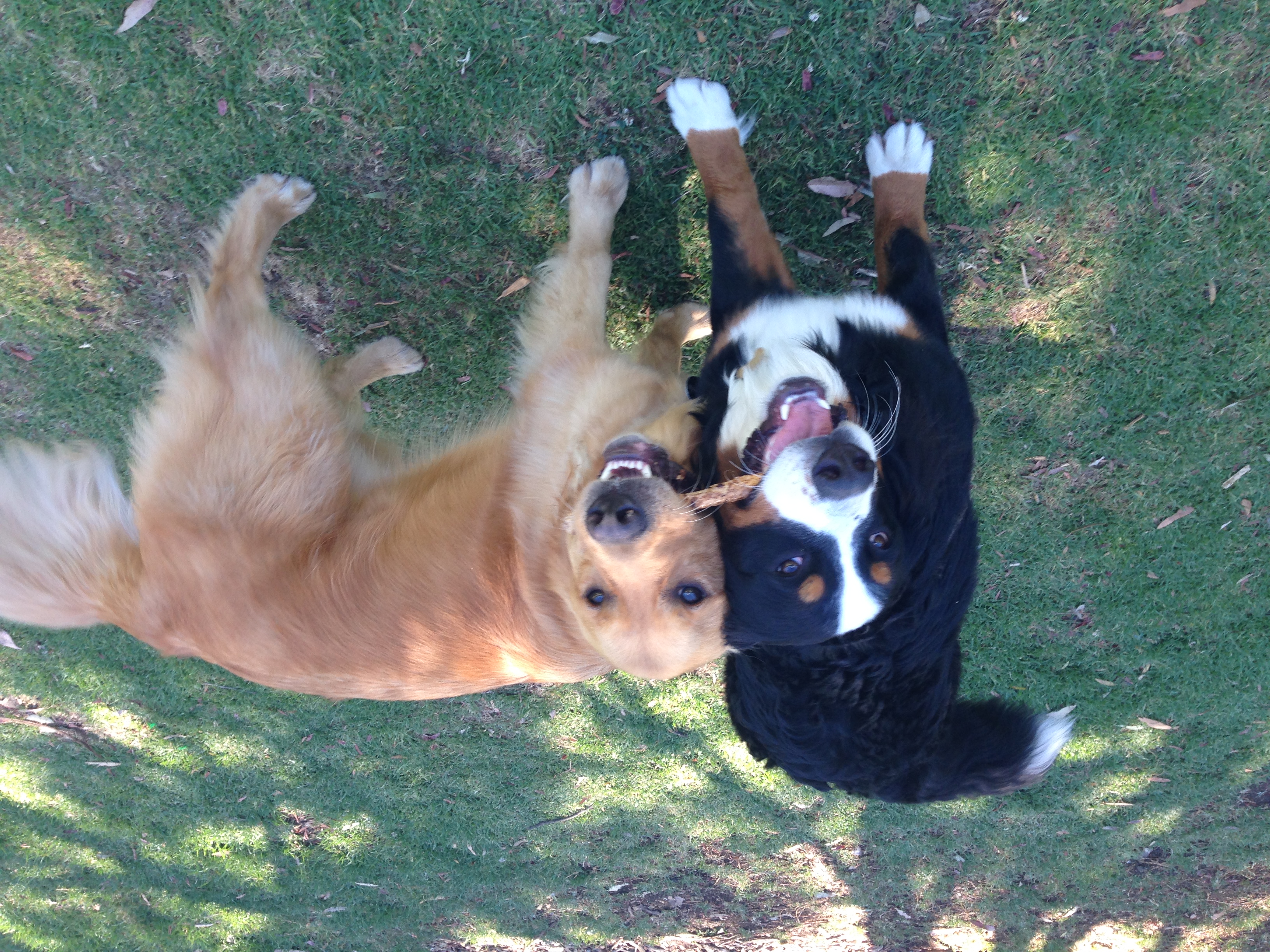
Dogs do what is safe and what works. That’s all.
If a dog barks at you to throw the ball and you throw it, rest assured he will do that again. If you ignore the barking he will eventually give up and try something else. He is not trying to be obnoxious; he is just doing what works. If you ask a dog to sit and he doesn’t, he is not being stubborn; it is likely that you haven’t trained the behaviour reliably yet, or there are too many competing distractions in the environment.
In other words, dogs are dogs, not people. They are a totally different species and we mustn’t forget that. Be patient with your dog and careful about what you pay attention to and what you ignore, and you will soon have a relaxed, content, and well-trained four- legged friend.
Just remember that Learning is only one piece of the puzzle when looking at a dogs behaviour. It’s so important that our dogs overall needs are being met first before looking at trying to change/fix behaviour. If you want to learn more about the other pieces of the puzzle, have a read of this article – Helping You Understand Your Dog Better.

As always please reach out to me if you have any questions or just want to say hi!
Mel AND Em xox
PS. Make sure to head to our SHOP if you haven’t already! Spoil yourself and your dog!!

References:
- Brophey, K. (2018) Meet Your Dog: The Game-Changing Guide to Understanding Your Dog’s Behavior.
Disclaimer: Cooper and Kids will not be liable for anything that happens to you, your dog or children by following the advice and tips in this article. If you have real concerns or worries about your dog and/or safety of your children, please seek out a professional to come and assess the situation asap.
